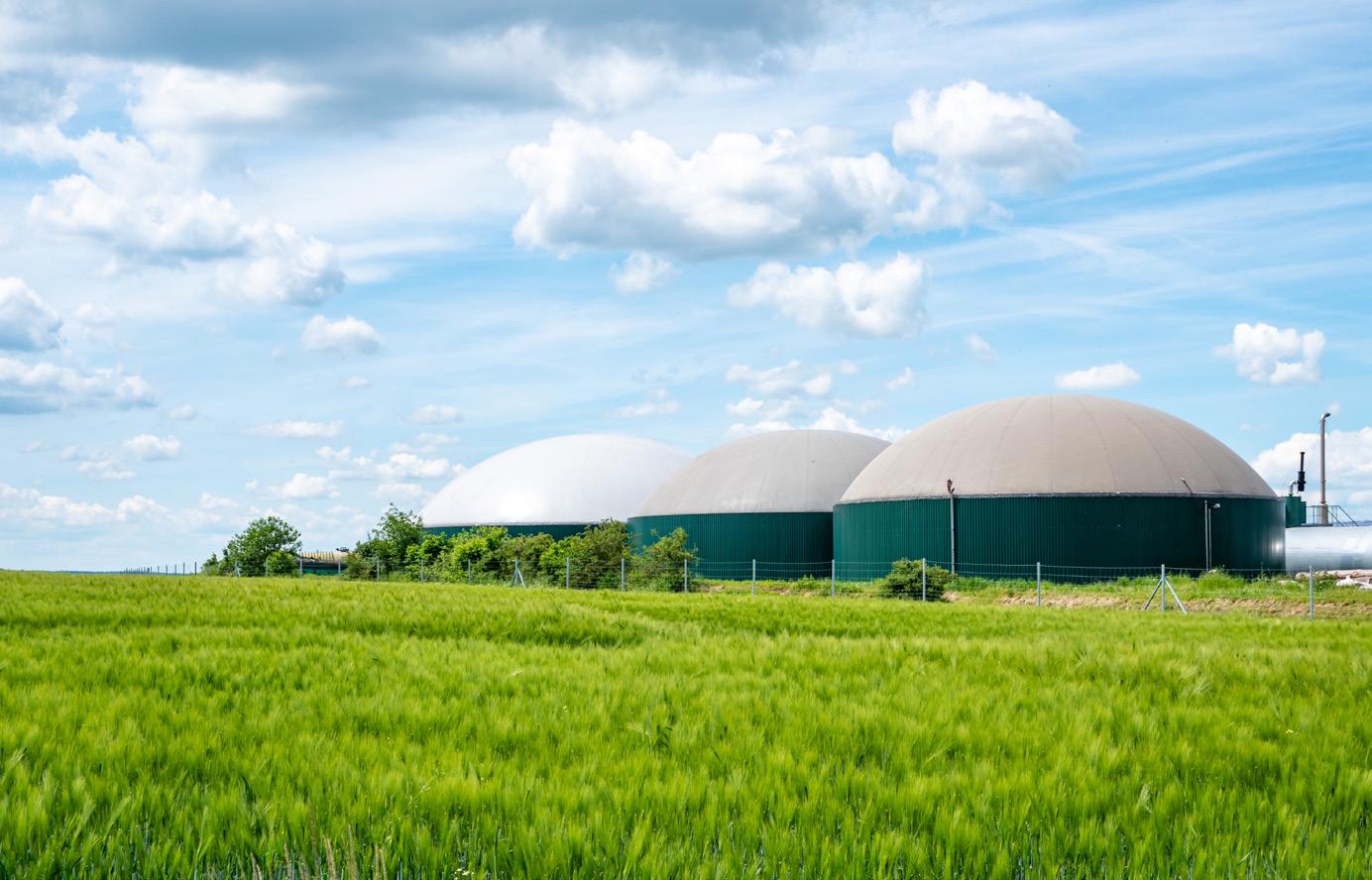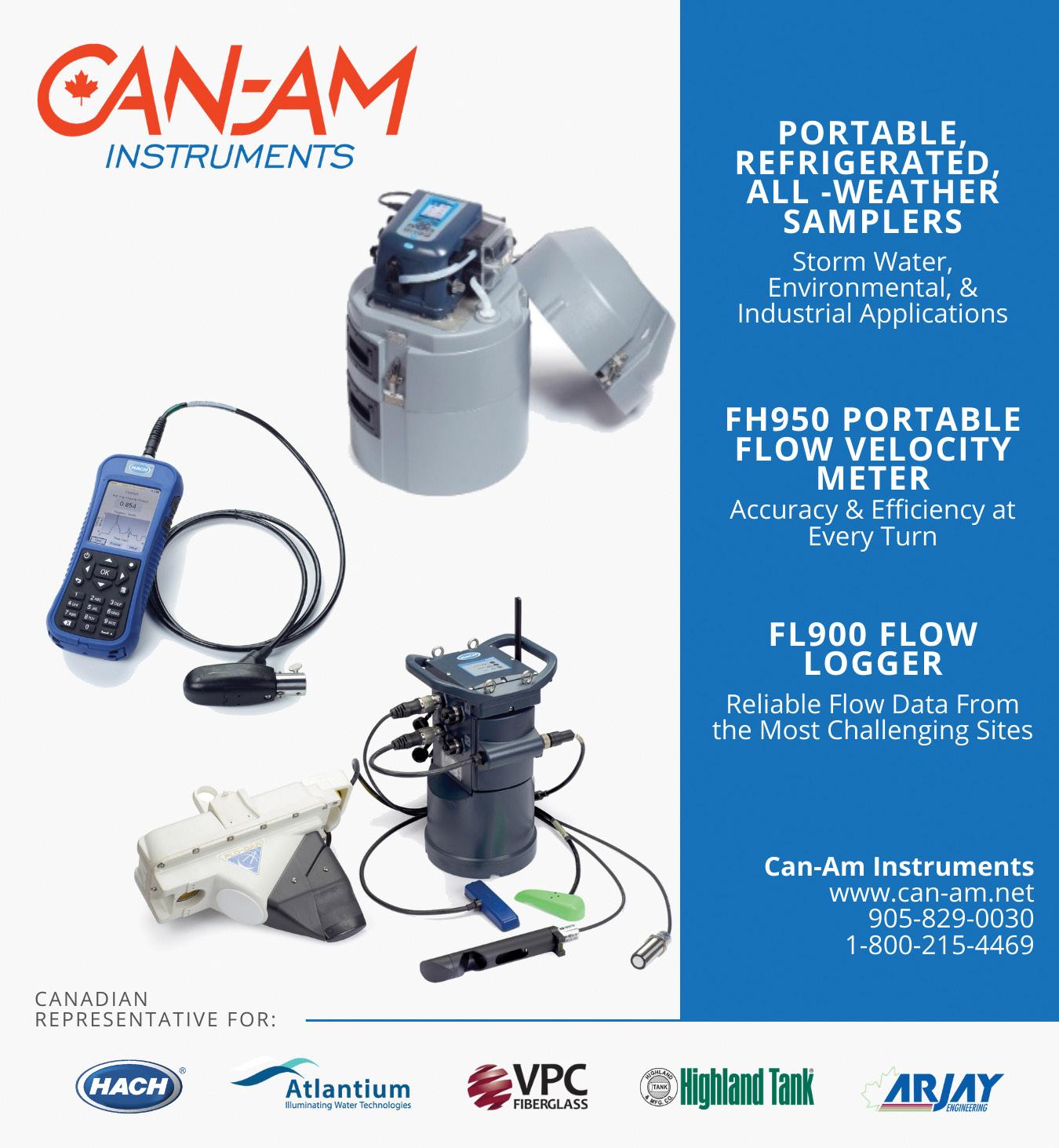
5 minute read
Canada ready to unleash the power of biogas
Canada has 279 operating biogas projects capturing methane from agricultural and community waste and turning it into clean electricity and renewable natural gas. Credit: animaflora pic stock,
stock.adobe.com

By Matt Hale
Canada saw a 50% increase in operational biogas capacity over the last decade, which is great news for both the economy and the environment, as is the strong outlook for future development contained in the latest report from the Canadian Biogas Association (CBA).
The Canadian 2020 Biogas Market Report revealed that the country now has 279 operating biogas projects capturing methane from agricultural and community waste and turning it into clean electricity and renewable natural gas (RNG).
In fact, anaerobic digestion now produces as much energy as nine large hydro-electric dams or 300,000 m2 of solar panels. In 2020, it generated 196 megawatts of electricity and 260 million m3 of biogas for heating or direct use as biomethane fuel.
Current anaerobic digestion biogas plants are a mixture of agricultural units, industrial digesters, plants at wastewater treatment facilities, and landfill gas capture systems. The report points out that these plants create numerous additional advantages in addition to greenhouse gas (GHG) and climate change benefits. These include the stabilization of nutrients and production of sustainable biofertilizer, and improvements to soil, air, and water quality, as well as economic benefits.
When it comes to the environment, the report points out that biogas reduces GHG emissions in three ways. Firstly, it captures methane, (a GHG with twenty-one times more warming potential than carbon dioxide) which would otherwise be released into the atmosphere.
Secondly the energy produced by anaerobic digestion displaces energy generated by fossil fuels, further reducing GHG emissions.
Finally, the process produces digestate which is a valuable, renewable organic fertilizer, and where this is used it displaces the use of synthetic fertilizers, which further reduces secondary GHG emissions.
The report also reveals that just 13% of
Canada’s easily accessible biogas potential is being used. While it may be disappointing that “the vast majority of Canada’s biogas potential remains untapped,” the scope of this potential, which is estimated at 155 PJ of energy (equivalent to 100 large hydro dams) is impressive and shows the scope for growth in the industry.
According to the report, the sector has the opportunity to bring more than eight times more biogas energy online. The biggest potential growth comes from the agricultural and landfill sectors, although there is still additional feedstock capacity in other areas, such as wastewater treatment and industrial anaerobic digestion.
Landfill sites account for the majority of the country’s currently installed biogas capacity, and this sector has plenty of growth potential left. Landfill gas is also a major opportunity, accounting for 21% of Canada’s biogas feedstock.
Wastewater treatment, source-separated organics and pulp mills also present important opportunities.
But, it is agricultural anaerobic digestion that has the biggest role to play in making renewable natural gas a mainstream source of renewable energy in Canada. The report stresses that crop residues and animal manure make up two-thirds of Canada’s easily-available biogas resources.
The report estimates that the agricultural sector alone could provide more than 100 PJ of energy, or two-thirds of the total energy potential of anaerobic digestion in Canada.
Not surprisingly, most of this potential capacity lies in Alberta, Saskatchewan, and Ontario (which is currently home to 56% of the country’s operational biogas plants), together with parts of southern Manitoba and Quebec.
There are already 27 further biogas plants in development across the country, with federal and regional policy developments such as those seen in British Columbia, Quebec and Ontario increasing demand for RNG.
Such policies include carbon pricing, financial support, provincial mandates for renewable natural gas, and the development of Clean Fuel Standards. However, despite such positive developments, policy uncertainty is identified as the

The Digestate Concentration System (DCS) from HRS reduces the volume of digestate produced from anaerobic digestion, increasing the nutrient content and making it easier to handle.
highest risk factor in terms of barriers to investment and development in the biogas sector, closely followed by concerns over the availability of feedstocks and the reliability of supply.
“Shifting priorities impact project financing, risk tolerances and developer commitments,” say the report’s authors. “A dynamic and uncertain policy/regulatory landscape makes it difficult for biogas/RNG producers to make the necessary investments.
Strong policy signals or policy framework such as a biogas/RNG strategy or mandate are essential to creating the right environment for adoption at the federal, provincial and municipal level.”
Overall, the report is extremely positive about the next decade, concluding that: “Most signals point to the 2020s being an even more impressive decade for Canada’s biogas growth. In 2030, we could be looking back on a decade that saw Canada multiply its biogas output exponentially.”
However, if the country is to maximize the benefits of this enormous potential, it is important that both new and existing biogas plants operate at the highest levels of efficiency.
Not only must biogas production at each and every facility be maximized, but the conversion of the biogas resource into usable energy also needs to be carried out efficiently, whether in terms of direct use of RNG as a fuel, through heat generation, or through electricity generation (either alone or using combined heat and power (CHP) technologies).
Maximizing heat transfer is crucial, as is using forms of digester heating that are easy to maintain and upgrade, such as external heating systems.
Maximizing the nutrient potential of the biofertilizer that results from anaerobic digestion and providing it to farmers in an easy to handle, efficient and safe format is also vital if potential markets for this valuable resource are to meet their full potential.
HRS Heat Exchangers produce a range of systems that are specifically designed to improve the efficiency of anaerobic digestion plant operation, add value to digestate production (which is a valuable, renewable and low-carbon organic fertilizer and soil conditioner) and prolong the life of anaerobic digestion plant components.
HRS also manufactures a range of heat exchangers for use in biogas production, including the HRS Unicus Series of scraped surface heat exchangers for use in thermal hydrolysis to increase biogas production; the G Series for exhaust gas cooling and heat recapture; and the DTI Series for feedstock and digestate heating.










